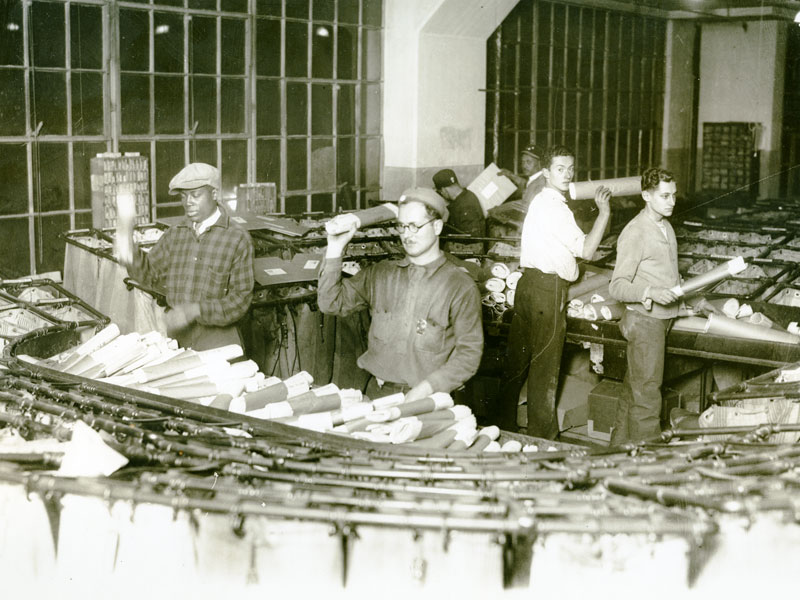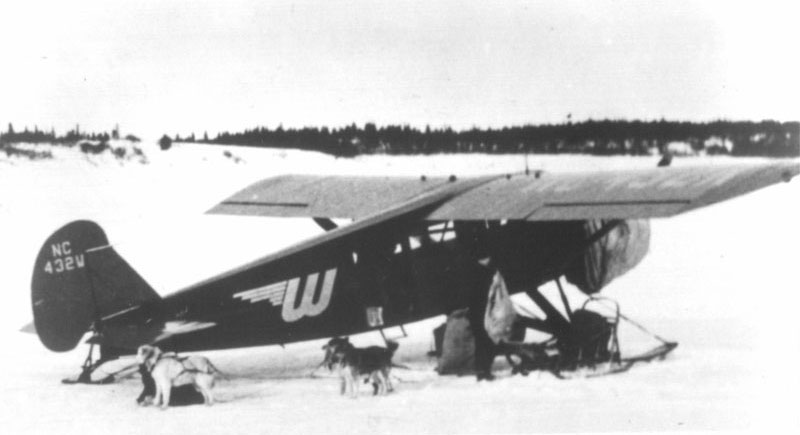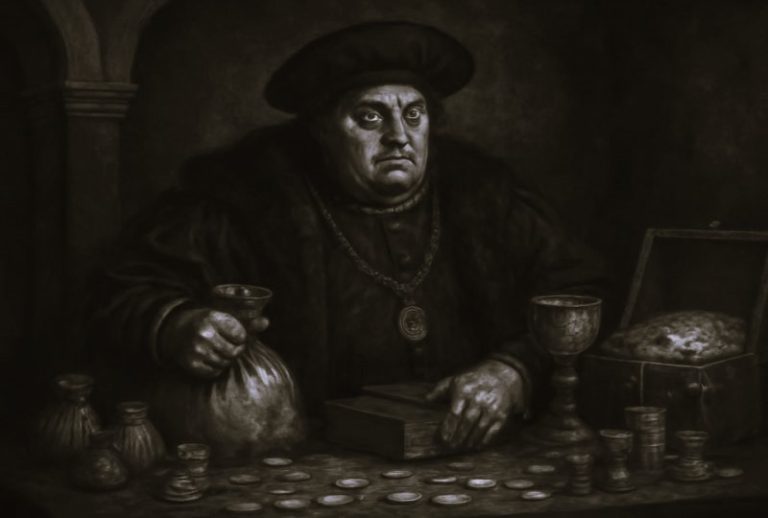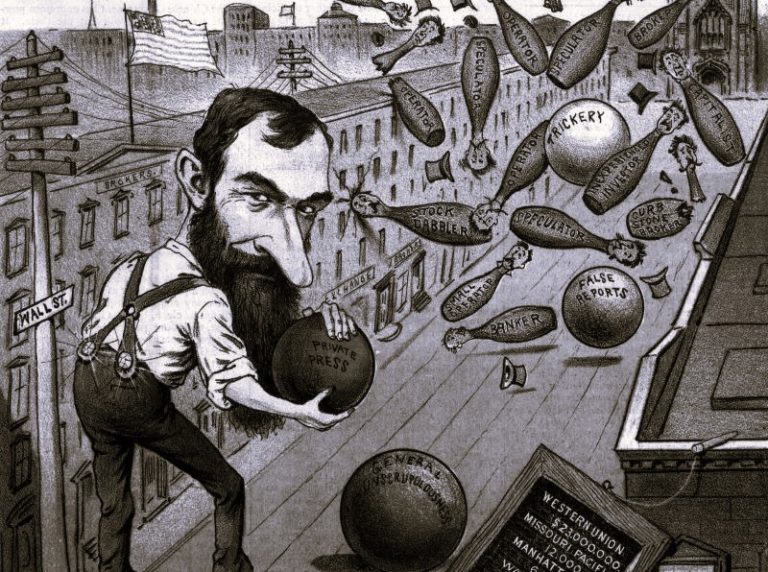1808
Overview
When we reflect that the objects effected by the transportation of the mail are among the choicest comforts and enjoyments of social life, it is pleasing to observe that the dissemination of them to every corner of our country has outstripped in their increase even the rapid march of our population.
President John Quincy Adams, December 5, 1826
The official postal system of the new United States began in 1792. Over the next decade and a half, it grew faster than it has ever since. Mailing letters was expensive at first, to help subsidize the cost of mailing newspapers—the crucial long–distance information system of the times.
In 1800, postal officials began using selected post offices as distribution centers, where mail for large areas was processed and sent on. This “hub-and-spoke” system is in use again today.
The Village Tavern (and Post Office)

Private stagecoach companies held contracts to move the mail between towns. In this painting, a stagecoach driver brings letters in the leather mail pouch and newspapers in the basket.
John Lewis Krimmel’s painting from 1814 shows a man delivering mail to a tavern, which is also a post office. In small towns of the early Republic, a general store, inn, or some other business often doubled as the post office. In this image, Krimmel shows the taproom of a public house near Philadelphia. At this time, few towns had separate post offices. Patrons of all social classes eagerly await the mail; the postmaster has neatly folded older newspapers on the back wall on portable racks.
Moving the Mail

Private stagecoach companies held contracts to move the mail between towns. In this painting, a stagecoach driver brings letters in the leather mail pouch and newspapers in the basket.
Spreading the News

Patrons of all social classes eagerly await the mail; the postmaster has neatly folded older newspapers on the back wall on portable racks.
An Informal Post Office

In this image, Krimmel shows the taproom of a public house near Philadelphia that doubled as a post office. At this time, few towns had separate post offices.
Part-Time Postmasters

The writing desk to far right implies tavern keeper is also the postmaster, the only representative of the federal government ordinary Americans would likely meet.
A spectacle never before displayed among men. It is the spectacle, not of the learned & the wealthy only, but of the great body of people…having free & constant access to the public prints.
Samuel Miller, minister, 1803
The Travels of the United States’ Gazette

Printers in Philadelphia have Friday morning’s edition of the United States’ Gazette ready to go.
A servant brings a packet of the newspapers to Philadelphia’s postmaster, Robert Patton. He records the address of the packet, puts it in a locked satchel destined for Washington, PA.

The satchel is carried to the Pittsburgh Stage Company office, and loaded on the coach with mailbags and passengers to begin a three-day journey west.
The satchel reaches the Washington post office on Sunday evening. Postmaster Hugh Wylie met the coach. Keeping the mail moving was important, even on a Sunday.
And the United States’ Gazette started another journey, as patrons read the news and passed the papers along, from one family to the next.The post office and the people carried news from the nation’s biggest city across the state and beyond.
1859
Overview
A well-digest cheap-postage is the best means of diffusing intelligence among the people.
President James K. Polk, 1848
The postal system helped the nation grow. Newspapers and letters linked settlers moving west and the families and communities they left behind. Mail eased the isolation of the frontier.
Immigration and westward expansion pushed the postal service to grow and experiment. More Americans meant more mail, and the mission of the Post Office Department was to reach as many as possible—by horse, wagon, stagecoach, ship, and train.
A Tiny Revolution

In the 1840s and 1850s, lower postage rates and the advent of prepaid postage stamps transformed the mail system in the United States. The price of mailing a letter from coast to coast dropped from 40 cents in 1847 to just 3 cents by 1863.

The postal system helped the nation grow. Newspapers and letters linked settlers moving west and the families and communities they left behind. Mail eased the isolation of the frontier.
Immigration and westward expansion pushed the postal service to grow and experiment. More Americans meant more mail, and the mission of the Post Office Department was to reach as many as possible—by horse, wagon, stagecoach, ship, and train.
“My Dear Son”: From St. Louis, Missouri, to Ft. Yuma, California Territory

Mrs. Ayres takes the letter to the new downtown post office, one of the first constructed west of the Mississippi River.
She buys a 3-cent stamp and applies it to the letter. The postmaster cancels the postage with his handstamp, puts it in a sack with other mail headed west, and sets the sack aside for the mail wagon.
A mail wagon takes the sack to the Pacific Railroad office at the St. Louis depot. The train carrying the sack leaves the depot at 8 a.m. Monday morning.

When the train reaches the end of the tracks in western Missouri, the sack is transferred to a Butterfield stagecoach for a long ride across the West. Why a stagecoach? Trains did not cross the entire U.S. continent until 1869.
Sixteen days and 2,000 miles later, the letter arrives at Fort Yuma. At mail call, Lt. Ayres learns he has a letter and takes it back to his quarters to read the news from home.
1885
Growing a Business by Mail
The concept of a “global market” is part of 21st century realities. For American businesses and customers of 1885, global markets were unknown. The nation’s economy had not yet fully developed a national market.
As of the early 1860s, packages weighing less than four pounds could be sent through the US mail as part of a new system that separated mail by class. In 1879 a third class was added for mail order merchandise. This, along with a new printing process that added photographs to product descriptions, and the fast-growing railway system, brought consumers and companies closer together.
Postmaster John T. Jackson

On April 1, 1891 John T. Jackson became the postmaster of Alanthus, Virginia. When he began his career, the twenty-nine year old was greeted with threats from those unwilling to accept an African-American in that position. He remained in his job for 49 years, retiring in 1940.
Jackson’s wife, Lille, worked as the town’s postmaster for seven months after John’s retirement. The family kept his distribution case and donated it to the Smithsonian Institution in the late 1980s.

The mail-order business blossomed in the late 1800s. With the postal service as a distributor, companies began to serve more and more customers across the country.
The seed business thrived on mail orders. Seeds were crucial to the economy, and they were given a special, lower postage rate. Seed catalogs and mail-order shipments enabled farmers to try new varieties of plants and follow the latest scientific advice.
Planting a Seed: Rochester, New York to Ft. Madison, Iowa

An order for seeds arrives by mail at the Harris Seed Company in Rochester, NY. Employees package and weigh the seeds. Fourth-class business mail gets a special rate—1-cent per ounce.
A wagon takes the package and other mail to the post office where it is sorted into pouches according to the schedules of arriving Railway Post Office cars at the train station.

On board the Rochester and Niagara Falls Railway Post Office train car, clerks open the pouches and distribute the mail in cases and racks. Along the way, the seeds’ mail pouch is transferred onto other trains at Buffalo and then Chicago.
After they reach the Ft. Madison train station, the pouch is taken to the post office. A local mail contractor picks up the seeds—and other mail for rural customers—and delivers them to a farm outside town.
1917
Machines Move the Mail
The history of civilization is the history of the struggle for human rights. Basic in this struggle is free communication on equal conditions. Progress in the facilities for such communication has made the United States postal service a democratic institution.
Daniel C. Roper, First Assistant Postmaster General, 1917

In some big cities, city post offices were designed as factories behind an elegant façade. Inside, buckets and conveyor belts moved the mail through the system. Canceling machines marked the postage stamps.
Automobiles joined ships, trains, streetcars, and pneumatic tubes as machines that moved the mail. As the machinery of the postal system changed, it still connected families and businesses around the world.
Throwing Mail into Bags
Postal workers sorted some mail by tossing it into bags. This short, 57-second, silent video was produced by the “American Mutoscope & Biograph Company” in 1903. Notice the stage backdrop painted to resemble the interior of a post office.
Over There: From the Battlefield in France to Linwood, Maryland

An American soldier writes a postcard home, reassuring his family that he’s surviving in France, and takes it to the American Expeditionary Force post office.

A U.S. Post Office worker drives the military mail to the port in France before being placed on board a ship bound for New York City where it arrives a week later. At the New York City post office, the postcard is dropped into a pouch for Maryland.

A wagon carries the pouch to Pennsylvania Station and it’s placed on the Railway Post Office car in the southbound New York and Washington train. The postcard is sorted en route into a pouch for the Baltimore and Cumberland RPO car, and transferred in Baltimore.

In the Baltimore and Cumberland RPO, the postcard is sorted again into a pouch for Linwood. As the train passes Linwood, the pouch is thrown from the car, and a mail messenger picks it up and carries it to the Linwood post office.

Sorted by hand in the post office, the soldier’s postcard is taken on a Rural Free Delivery route and dropped in an RFD box where his family picks it up.

1936
Handle with Care

By the mid-1930s, the U.S. parcel post system was more than 20 years old. It had opened a new world to rural Americans. Products that rarely left cities only a few years earlier now appeared at their doorsteps. And farm produce traveled to urban markets by mail.

Businesses depended on the efficiency, reliability, and security of the parcel post. A parcel that arrived late was sometimes no better than one damaged or lost.
The Chicken or the Egg?: From Washington State to Alaska

Chickens can have a hard time wintering in Alaska. So, in the spring, an Alaskan farmer ordered eggs from Seattle in time for them to hatch into chicks after they reach Alaska.
Packages travel at different rates based not only on size and weight, but on distance. In 1913 with the introduction of Parcel Post, the Post Office Department began dividing the nation into zones to help determine reasonable postage for parcels.
When a post office clerk weighed the egg crate with a scale like this, he or she learned that it weighed between one and two pounds. Parcel post to Alaska was 15 cents for the first pound and 11 cents for each additional pound. The crate’s postage was 26 cents.
The eggs travel from an eastern Washington farm to Seattle by rail, and on the way they are sorted into a sack for the Seattle and Seward RPO—a boat route. At the Seattle post office, the pouches await the next ship headed north and are carried aboard on the day the ship sails.

Four days later, the ship docks in Seward, Alaska. The pouch holding the eggs is taken to the post office, and its contents are sorted for an Alaska Star Route that might carry them across the territory on a variety of vehicles—another ship, a small plane, or dogsled.
Helping Unclog the Mail
After World War II, mail volume grew every year—doubling between 1946 and 1966. Dependent on federal subsidies, the Post Office couldn’t buy enough machines and hire enough employees to keep up. In October 1966, a flood of holiday advertisements and election mailings choked the system.
The Chicago Post Office, the world’s largest postal facility at the time, was overwhelmed by mail. It stopped delivering mail for three weeks. Mail overflowed surrounding post offices. Soon the mail back up was felt across the country. Change was essential.
1968
The Multi-Position Letter Sorting Machine (MPLSM)
The Post Office must mechanize because, if the mail volume continues to grow, it would be impossible to cope with the great flood of mail within a relatively few years, using present-day methods.
Postmaster General Arthur E. Summerfield, 1957
Codes and machines revolutionized the Postal Office in the 1960s. The ever-growing volume of mail drove the Post Office to introduce ZIP Codes. Machines began taking on more and more of the work of moving the mail. Postal workers using these machines could sort 30,000 letters an hour.

Since then, the pace and scale of automation in the postal system has exploded.

“Dear Congressman Smith”: From Long Island to Capitol Hill
American citizens conduct the everyday politics of the nation through the mail, in letters like this from Joe Jones in Long Island, New York, to his congressman in Washington.
Mr. Jones drops his letter in a familiar collection box, a postal worker picks up the mail, and then this piece begins to follow a new path through the system.

At the processing center in Hicksville, NY, the letter is run through a facer-canceller. By 1968, dozens of processing centers around the country had these new machines. They oriented the letters face-up, in the same direction, so the machine could cancel each stamp—automating two jobs that postal workers had done by hand for more than a century.
Mr. Jones’s letter joins hundreds of thousands of others flowing through a new Multi-Position Letter Sorting Machine (MPLSM) at the Hicksville center. Twelve postal workers sit at stations around the machine. The machine moves Mr. Jones’s letter into position in front of one of the operators, and he or she types in part of the ZIP Code for the Washington, D.C., area. The machine sorts the letter to join others headed for Washington. Within a second, the next letter takes its place.
With thousands of others, the letter is poured into a mail sack and loaded onto a train for Washington.
At the Washington Post Office, mail clerks at a second MPLSM sorts the letter for the unique ZIP Code of the U.S. Congress.
The letters delivered to the Congressional mailroom. In the mailroom, a postal worker sorts it into the boxes for congressman, and a messenger delivers it to his office. A member of the congressman’s staff reads the letter and writes a response for the congressman’s signature.
1988
Recognizing and Reorganizing the Mail

Since research began in the 1960s, Optical Character Recognition—the ability of machines to read printed words—was seen as an essential first step in truly automating mail processing. With such technology, a significant percentage of the US mail could be sorted and processed without a single human eye reading the address until it was ready for delivery. The unblinking mechanical eye of the OCR oversaw huge swaths of mail processing.
Developed by Lockheed Martin and the USPS and deployed in 2002, the WFOV camera can read many forms of barcodes, machine-printed writing, and even handwriting. By taking four simultaneous images of each mail piece, the WFOV camera achieved remarkable levels of accuracy.
Bulk Mail Centers—Streamlining the Mail Flow

As the sheer volume of mail continued to grow, it began to overwhelm the mechanical innovations of the previous 60 years. In the 1980s, the USPS made strides to keep up with this river of mail in two main ways: by using automated machines that took on more of the work of sorting the mail and by reorganizing the channels through which some mail flowed with new Bulk Mail Centers.

Lots of businesses send out millions of pieces of mail—from magazines to sweepstakes entries—sometimes in a single day. The USPS has worked out a system with businesses like this so they take on some of the work of preparing and sorting the mail, and the USPS gives them a discount on the postage. Take a magazine, for example.

Twenty-one of the new Bulk Mail Centers were built in the 1980s. The Postal Service hoped to keep up with the rising tide of commercial mass mailings by crisscrossing the nation with a network of specialized centers, and by implementing pricing policies that encouraged mailers to carry some of the burden of sorting and transporting the mail.
Happy Birthday Judy: From Nintendo Company Headquarters to Norman, Oklahoma
Judy Franklin’s aunt and uncle buy her a subscription to the new Nintendo Power Magazine for her 11th birthday. They mail in the subscription request, and the magazine’s distributor is notified to add the Franklin residence in Norman, OK, to the list of recipients.

The company that mails Nintendo Power prints postage and an address label for each copy, and sorts the magazines to the first three digits of their ZIP Codes before stacking them on a pallet. These pallets are then shipped to the nearest Bulk Mail Center.

At the Bulk Mail Center, the pallet is spot-checked to make sure that the mailer has been accurate about the number of magazines shipped, weight, etc. The magazines are then sorted there, and shipped out to different postal facilities across the country. Judy’s magazine goes to the Norman, OK Processing and Distribution Center, where the magazine is sorted into the rest of the mail stream and sorted down to the appropriate local post office.
1997
Automation Increases
Automation is our passport to the future, and in many respects the future is now.
Anthony M. Frank, Postmaster General

The Postal System continued to increase automation—more and more mail passed through fewer and fewer hands along the path from the post office to people’s homes.
But no matter how much automation occurs, people remain part of the process. As machines do more, people still must operate, supervise, maintain, and design the machines. And as the machines become more complex, they present ever more difficult problems for engineers to try to overcome.
“You Have Been Pre-Approved…”: From Salt Lake City to Ann Arbor, Michigan
Judy Franklin is now a junior at the University of Michigan. Like so many other college students, she receives a pre-approved credit card application. How it reaches her is a lesson in postal automation.
Judy’s name and address were part of a database sold to various credit card companies. A program automatically printed out letters and envelopes to people on the database, complete with a barcode that could be read by postal equipment. The credit card company shipped pallets upon pallets of these letters to the Bulk Mail Center, where the company is given a postage discount for the shipping and for using the barcodes.
Once Judy’s application reaches her regional Processing and Distribution Center, it is fed into a Carrier Sequence Barcode Sorter. Using the preprinted barcode, this machine sorts the mail into the final order that the mail carrier uses to deliver it on his route.
Engineers’ Stories – Lynn Robbins

Engineering is a field where young people can make a difference.
Lynn Robbins, Head of the Process and Quality Management Group, Siemens
For more than 20 years, Lynn Robbins has worked on the development of many innovative pieces of postal automation equipment at Siemens—from optical character readers to delivery bar code sorters. She has progressed through engineering and project management in various leadership roles to her current position—Director of Process & Quality Management.
In engineering, Robbins sees one thing as most important—you have to be a problem-solver. According to Lynn, a primary capability of an engineer is a desire to solve problems. “Young people who enjoy the challenge of puzzles— along with the determination to solve them, no matter how difficult—should consider engineering as a profession.”
Another important characteristic for aspiring engineers is the ability to work on a team. Working with any piece of advanced technology will require a whole team of engineers with different skills. “We break things apart here. We give certain tasks to certain engineers, because one engineer doesn’t do it all. And then we integrate what they do back together.”
“A machine like the CSBCS will have people working on all sorts of different pieces—diverter gates, camera, the barcode technology, the paths—no one person works on everything… What you see is a collaborative effort, integrated into one system.”
Engineers’ Stories – Barbara Trower
You’re seeking real solutions to real problems in real time.
Barbara Trower, former Manager of Flat Mail Technology, USP
Barbara Trower grew up in Carter County, Kentucky, and went to college at Eastern Kentucky University as a biology major. She hadn’t always planned on going into engineering, but said “I always wanted to be in science or a technical field.”
She ultimately moved to the Washington, D.C., area and entered a specialist training program at the US Postal Service. After studying various areas of engineering, she became a materials engineer at the USPS lab. She loved the position: “I was happy as can be in my lab, with my scanning electron microscope and all of these instruments.”
Not long after, the Postal Service began investigating new equipment for automation and optical character recognition. Trower’s boss encouraged her to go to Chicago and do some of the testing. There she became a program manager, leading a team of engineers to think of solutions to modern postal problems and creating specifications for new equipment to be developed by contractors.
Trower sees the scientific method as a crucial part of the work of an engineer: “You collect data, you observe, and you analyze results. You make determinations based on the information collected and the results that you find.”
Engineers’ Stories – Mike Heaton

A systems engineer is the very first person on a project … the people that take a problem and turn it into something that’s real.
Mike Heaton, Systems Engineer, Lockheed Martin
Mike Heaton’s father was an electrician for a railroad company. From childhood, he remembers being fascinated with how electricity made things work. “I always was building different things from used parts, like making alarm systems out of doorbells, or taking old telephone handsets, and you could hook them up to a battery, and you could talk between rooms without shouting.”
Heaton attended Iowa State University as an undergraduate and began training as an electrical engineer. He shifted interests in college, and he pursued a degree in industrial technology because it allowed him to study many different aspects of engineering. This led to his career as a systems engineer.
“Most of the technologies that get produced have many different engineers involved . . . mechanical engineers, electrical engineers, software engineers, human factor engineers, and several other types. The system engineer identifies what engineering skills are needed to make a real object.”
When asked what advice he would give to people interested in becoming engineers, he had this to offer: “I would get experience as a specialist, and then become a generalist to move forward.” He added, “Learn a foreign language.” Engineering is a diverse profession, and you need to be able to communicate with people from all around the world.
The Carrier Sequence Barcode Sorter (CSBCS)

For decades, mail carriers had to sort their mail into its delivery sequence before they went out on their routes. This process often took several hours. The Carrier Sequence Barcode Sorter (CSBCS) was one of the first widely implemented machines that automated the sorting of mail down to the delivery sequence. Mail could go directly from the CSBCS to the carrier—in order and ready to be delivered.
Feeder Mechanism

Mail is first loaded into the feeder mechanism. This piece of the machine takes the mail and feeds it, one piece at a time, into the CSBCS. The black paddle pushes mail forward while a series of belts pull one piece of mail at a time into the CSBCS.
Head

The CSBCS “head” is actually the main control interface for the device. Operators use the buttons and switches on this unit to turn the machine on and off and control certain basic settings. In addition, a series of lights notifies operators of the machine’s status and errors in processing.

WABCR Camera

The Wide-Angle Barcode Reader (WABCR) camera takes a picture of each piece of mail. The image is sent to a computer where the letter’s destination is determined using the PostNet barcode printed on the front of the envelope This data is then sent back to the CSBCS for sortation.
Delay Line

Like the CSBCS’s leveler mechanism, the delay line is a relatively simple series of belts that serves a very important function. Mail goes through the CSBCS at a shockingly high speed—about 19,000 letters per hour. The mail is literally moving so fast that there is not enough time between the WABCR camera and the sortation process for the computer to figure out where the letter is going, The delay line is the solution—it is an extra stretch of line that delays the letters long enough so the machine can figure out how to sort them.
Trays

Finally, the letters are sorted into various trays at the end of the machine, and the letters from each tray are re-loaded into the feeder for a second pass. After two passes, the letters are in delivery sequence and ready to be distributed to carriers.

2005
The Mail Gets Smarter
For all the challenges the Postal Service of the 21st century faces, it still retains its traditional place as a key cog in how American businesses conduct their affairs and how Americans all across this land communicate.
John M. McHugh, U.S. Representative, New York

As automation advanced, more and more mail was handled primarily by machines rather than humans. But these machines were not, at first, particularly clever. They could do only one, rather simple, repetitive task.

As USPS software grew more sophisticated, however, machines began to multitask—they were able to deal with different types of mail pieces and various contingencies. This introduced new levels of efficiency and nimbleness to a Postal Service that was larger than ever.
Helping a Brother Out: From Reston, Virginia to Stillwater, Oklahoma
Judy Franklin sends a check to her younger brother Ben. He is a college student at Oklahoma State, and occasionally needs a small loan from family. Unfortunately, Judy forgot when addressing the envelope that Ben had recently moved to a new apartment.
When Judy’s letter reaches the Processing and Distribution Center at Dulles Airport, it is identified in the Advanced Facer Canceller System—the second machine it goes through—as being incorrectly addressed. The Postal Automated Redirection System (PARS), a newly implemented piece of software, reads Judy’s hand-written address and compares it to a database of recently changed addresses. Because Ben filled out a change of address slip, the system recognizes this problem. The AFCS then directs the letter to another machine which reads the ID tag and affixes a label with the new address.
In the past, incorrectly addressed mail often traveled from the sender all the way to the local post office of the addressee before the address was corrected. With PARS, the address on a piece of mail is compared to a database of forwarding addresses at the first distribution center. If a forwarding address is found, the letter is labeled with a new address and barcode. It is then immediately returned to the normal sorting process.
Today
System Mail
[Mail has] a tactile character that’s difficult to replace with online equivalents.
Brian Wieser, Magna

Today, the postal system is a vast intricate, automated system, and a partner with many other systems, such as the Internet. It still relies on a combination of people and machines, but it offers services now—like letter tracking—that were unimaginable a few decades ago. Through these changes, the Postal Service has fulfilled its mission of universal service and preserved its fundamental role in American life.

Originally published by Smithsonian Institution, reprinted with permission for educational, non-commercial purposes.







